Earlier this week our dryer stopped producing heat en route to Rencounter Bay, Newfoundland. The drum would tumble, but there was no heat. Once we’d anchored, we rigged a clothesline in the engine room to take advantage of the heat to dry the large load of clothes while we investigated the failure.
We opened up the control panel to look for issues. The power was fine—the dryer is getting split phase 240V.
From the front panel we can check the timer and one of the resistors, but we can’t check the heater element, the thermal fuse or the two dryer thermostats. For that we have to open up the back of the dryer. The dryer is very built in, however, and access to the back looked challenging without sliding the entire unit out. It turns out that Nordhavn (thank you!) had installed an access panel in the back of the closet that the dryer stands against that provided access to the back of the dryer.
Spitfire, continuing his quest to investigate every locker and opening on the boat, was inside immediately after we’d removed the panel. He reported that the hose clamp on the exhaust hose might not be tight enough. :)
Removing the panel didn’t give quite enough room to remove the back of the dryer and access the wiring, so we had to remove the trim and screws securing the dryer in place, plus the bottom panel in front of the washer. We then could shift the dryer forward and tilt it away from the closet access panel enough to remove the panel at the back of the dryer to access the wiring for continued testing.
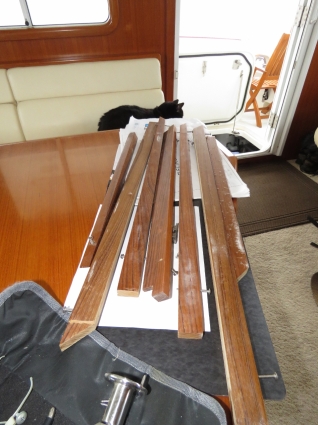
|
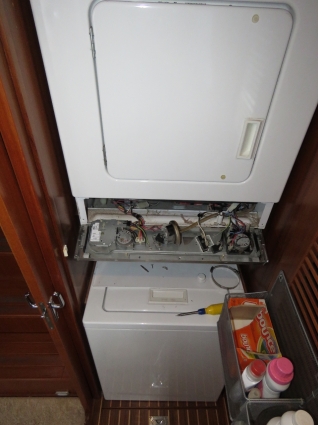
|
We learned that the dryer has a thermal fuse, pictured at the top of this post, that had tripped. When we jumped this fuse, the dryer produced heat again. The thermal fuse is a safety feature required for US dryers to prevent the dryer from overheating. We believe the likely cause of the fuse tripping was that external dryer vent had plugged with a layer of lint that had become soaked in the current wet environment in Newfoundland.
Unfortunately the fuse is not resettable and we don’t have spare. This isn’t great, but at least the dryer itself likely has no serious issue and should be in good working order once we get a new fuse. We’ll also get a spare fuse, and two internal thermostats that we learned about in investigating the issue. Other good news is that we actually can access and service some parts of the dryer without removing it completely. And the third piece of good news is that the clothes dried in the engine room only marginally longer than in the dryer, so we have a good backup with double the capacity. We’re going to order some retractable clothes lines to install in the engine room for future use.
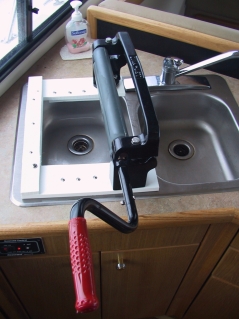
|
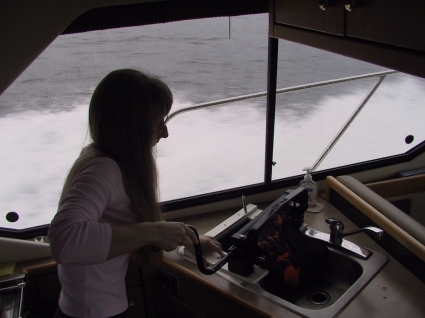
|
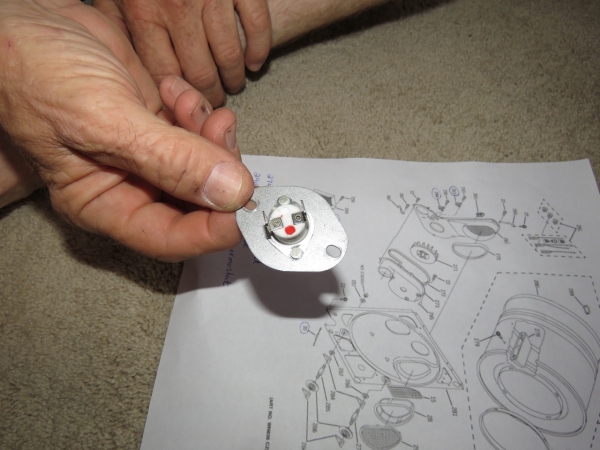
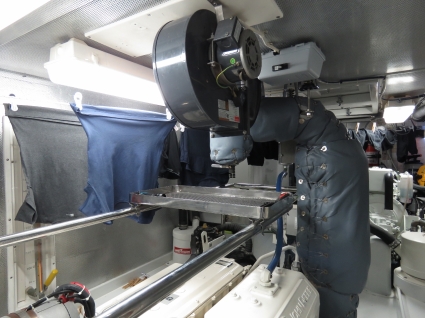
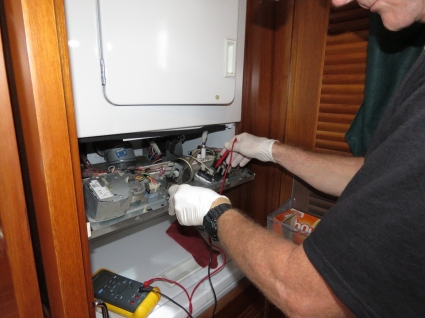
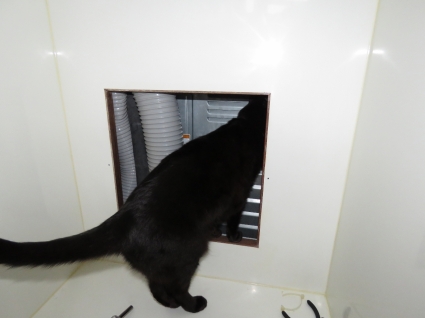

Well, Emerson markets them under “THERM-O-DISC” to various companies most notably White Rogers.
Normally they are built to an equipment manufacturers specifications after they figure out several things one of which is frequency of operation.
196F is rather specific however since it’s a one time use it’s obvious the manufacturer doesn’t expect it to see that temperature except under what they consider to be excessive conditions.
With something that is automatic reset, you’d have to decide if what I can find is acceptable as it’s unlikely I’ll find something at exactly 196F.
Next time I’m in a supply house I’ll find out what temperatures are commonly available. If your paperwork tells you what the thermostat in the dryer cycles at it would help in your decision making process.
As an example these switches generally trip at the set point and reset after the temp falls 40F.
I don’t know what temperature an electric dryer is trying to maintain however, I doubt it’s much above 160F in which case a 190F switch that is automatic reset might be more than is necessary.
Just somethings to thing about while I’m looking.
Well done Steve. The White Rogers 3L01-190 loooks perfect. We currently have a one-shot fuse with a 196F blow. The 3L01-190 cuts out at 190F so it’ll permit slightly less high temperatures and it automatically cuts back in at 150F. Looks perfect for me. A slightly lower cutout temperature and auto-reset rather than tear aprt the entire day head, pull the dryer forward for clearance, unload the wet locker, remove the back-panel for dryer access, and then replace the $60 fuse. The 3L01-190 is physically the same dimensions and costs $8.
I had this typed up before coming here so thought I’d add it anyway although you are already heading in the same direction.
Hello James,
Well, I’ve done a little research into electric dryers which of course is only of limited use since it’s highly unlikely that I was researching your particular dryer, and I make no claim that my research is thorough.
It seems the common dryer temps are ambient (air dry), 120F (low heat) and 150F (High heat).
While both lint, and the coating produced when drying clothes washed in fabric softener is a good insulator, for a 196F thermal fuse to let go there is one more test you might consider doing.
Temporarily disconnect the dryer vent and measure the temperature on high and low heat. It’s possible your problem wasn’t entirely a clogged vent but something with the thermostat. I think you mentioned having two so I would assume one is for low and the other for high.
The switch that I found is a 190F manual reset which would work in MY dryer however, it’s only good for pilot duty as it’s rated 8 amps at 120 volt and 4 amps at 240 volt.
Looking at the picture of your thermal fuse and considering the ratings of those I’ve come across, I wouldn’t believe it was rated for anything other than pilot duty, but that is something that would need to be verified.
I would need the manufacturer and model number of your particular dryer to continue researching however, this is what I’ve come up with so far.
Manual Reset 190F high limit switch: White Rogers 3L02-190
Here is an example of one I found on Amazon and there are many other sources.
https://www.amazon.com/White-Rodgers-Emerson-3L02190-Limit-Control/dp/B00QW1ZGPA
Automatic Reset high limit switch: White Rogers 3L01-190
Cut-out 190F, Cut-in 150F
I would use the manual reset myself. It might be a pain to access the back of your dryer but an automatic reset might mask a problem with a thermostat.
I hope this helps.
And if you think the manual reset could be a problem you could always use a knock out cutter (or uni-bit to punch a hole in the back plate of the dryer so you could reset it with a wooden dowel without removing the back plate. That way if it was a thermostat and it kept tripping it would be a good indicator.
I don’t know if I’d want to use a dryer with a thermostat running wild myself. You could also install a secondary switch say a 3L02-200 manual reset just in case a thermostat ran wild and the automatic reset failed in the closed position which I’ve never seen happen in 37 years in my trade but I suppose is possible.
Then close the hole with a piece of aluminum tape although I doubt that part would be necessary.
That’s an interesting perspective Steve. I had added the 3L01-190 auto-reset to my list of things to buy mostly because reseting a manual switch or changing a single shot requires moving the dryer out of the wall to get clearance to shift it out far enough to take the back off. It’s a ton of work to get enough woodwork off to get the dryer out. Your simple solution of cutting a hole in the back to allow reseting a manual switch in the unlikely event of an overheat is a good idea and that approach is much less likely to mask a problem.
To be on the safe side, I’ll replace the primary thermostat as well while in there putting in the 3L02-190. Thanks for the simple idea to make manual reset more practical.
Hey James glad you two are having a great time.
I actually had the same problem at home last week however, my dryer uses an automatic reset warp switch so unless the switch goes bad once the clogged vent is corrected the dryer continues to operate.
I’m sure if you wanted to do some digging, you could replace a one time thermal fuse with either an automatic or manual reset thermal switch.
Steve, I’ve been thinking exactly the same thing. It’s nuts that they install a “blow once” fuse when a multi-use thermal breaker probablly costs $3 more. And, they want more than $60 for the $2 single use thermal fuse. If you come across a source for a multi-use thermal breaker at 196F, let me know. That is likely what I’ll be looking for.